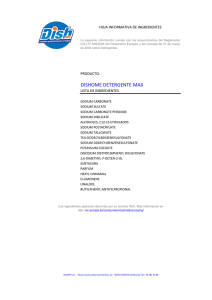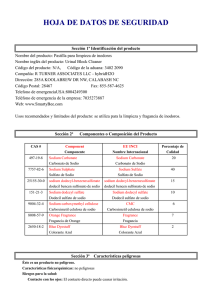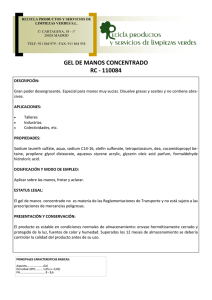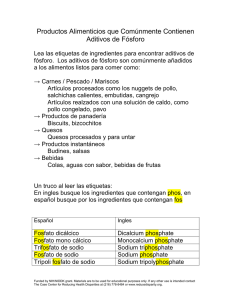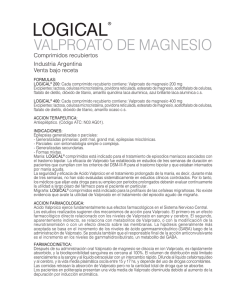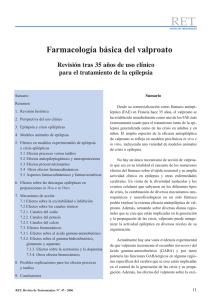1309-1313 El Agamy LAJP 4599:El Agamy
Anuncio
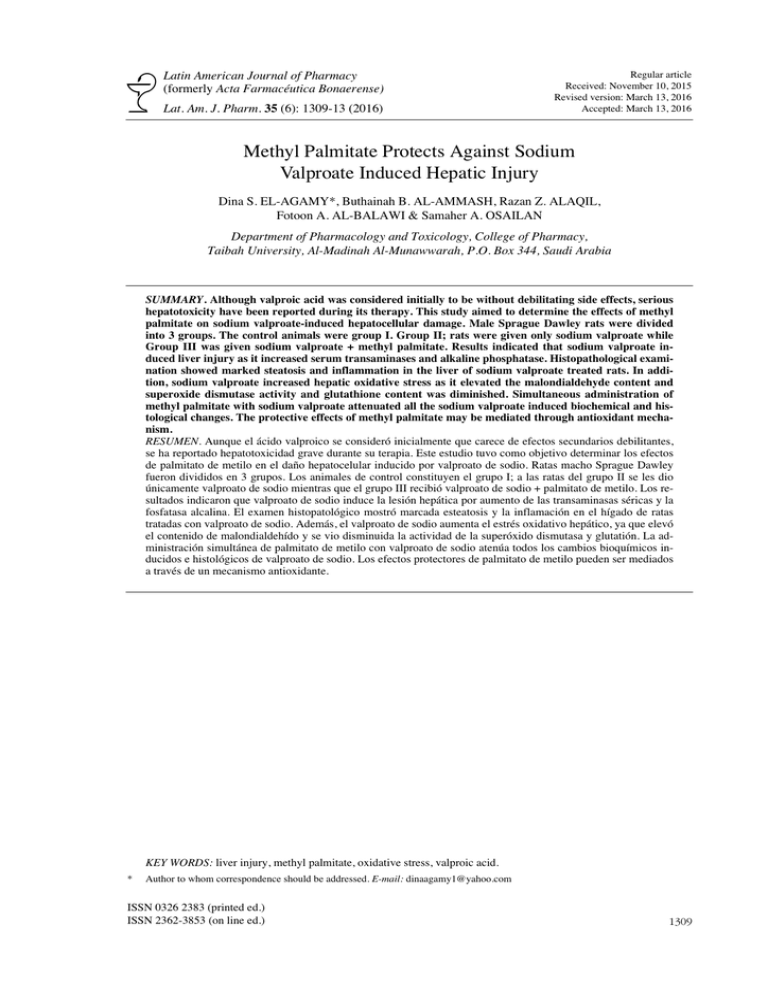
Latin American Journal of Pharmacy (formerly Acta Farmacéutica Bonaerense) Lat. Am. J. Pharm. 35 (6): 1309-13 (2016) Regular article Received: November 10, 2015 Revised version: March 13, 2016 Accepted: March 13, 2016 Methyl Palmitate Protects Against Sodium Valproate Induced Hepatic Injury Dina S. EL-AGAMY*, Buthainah B. AL-AMMASH, Razan Z. ALAQIL, Fotoon A. AL-BALAWI & Samaher A. OSAILAN Department of Pharmacology and Toxicology, College of Pharmacy, Taibah University, Al-Madinah Al-Munawwarah, P.O. Box 344, Saudi Arabia SUMMARY. Although valproic acid was considered initially to be without debilitating side effects, serious hepatotoxicity have been reported during its therapy. This study aimed to determine the effects of methyl palmitate on sodium valproate-induced hepatocellular damage. Male Sprague Dawley rats were divided into 3 groups. The control animals were group I. Group II; rats were given only sodium valproate while Group III was given sodium valproate + methyl palmitate. Results indicated that sodium valproate induced liver injury as it increased serum transaminases and alkaline phosphatase. Histopathological examination showed marked steatosis and inflammation in the liver of sodium valproate treated rats. In addition, sodium valproate increased hepatic oxidative stress as it elevated the malondialdehyde content and superoxide dismutase activity and glutathione content was diminished. Simultaneous administration of methyl palmitate with sodium valproate attenuated all the sodium valproate induced biochemical and histological changes. The protective effects of methyl palmitate may be mediated through antioxidant mechanism. RESUMEN. Aunque el ácido valproico se consideró inicialmente que carece de efectos secundarios debilitantes, se ha reportado hepatotoxicidad grave durante su terapia. Este estudio tuvo como objetivo determinar los efectos de palmitato de metilo en el daño hepatocelular inducido por valproato de sodio. Ratas macho Sprague Dawley fueron divididos en 3 grupos. Los animales de control constituyen el grupo I; a las ratas del grupo II se les dio únicamente valproato de sodio mientras que el grupo III recibió valproato de sodio + palmitato de metilo. Los resultados indicaron que valproato de sodio induce la lesión hepática por aumento de las transaminasas séricas y la fosfatasa alcalina. El examen histopatológico mostró marcada esteatosis y la inflamación en el hígado de ratas tratadas con valproato de sodio. Además, el valproato de sodio aumenta el estrés oxidativo hepático, ya que elevó el contenido de malondialdehído y se vio disminuida la actividad de la superóxido dismutasa y glutatión. La administración simultánea de palmitato de metilo con valproato de sodio atenúa todos los cambios bioquímicos inducidos e histológicos de valproato de sodio. Los efectos protectores de palmitato de metilo pueden ser mediados a través de un mecanismo antioxidante. KEY WORDS: liver injury, methyl palmitate, oxidative stress, valproic acid. * Author to whom correspondence should be addressed. E-mail: dinaagamy1@yahoo.com ISSN 0326 2383 (printed ed.) ISSN 2362-3853 (on line ed.) 1309
